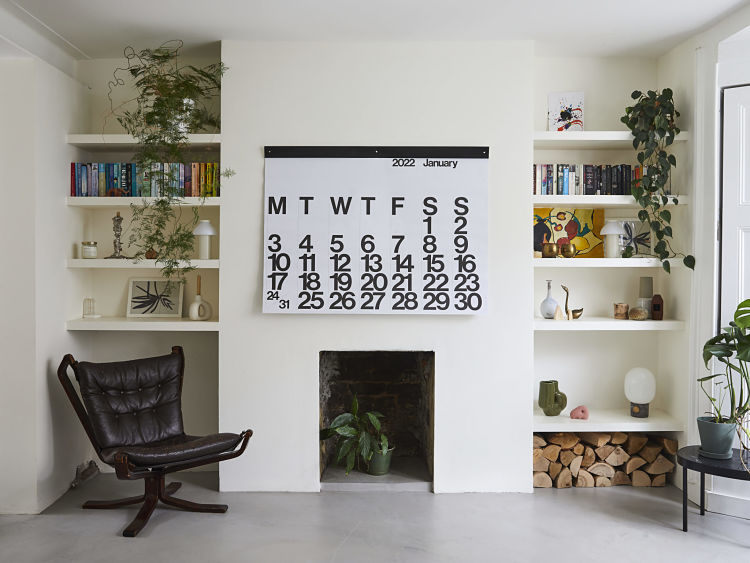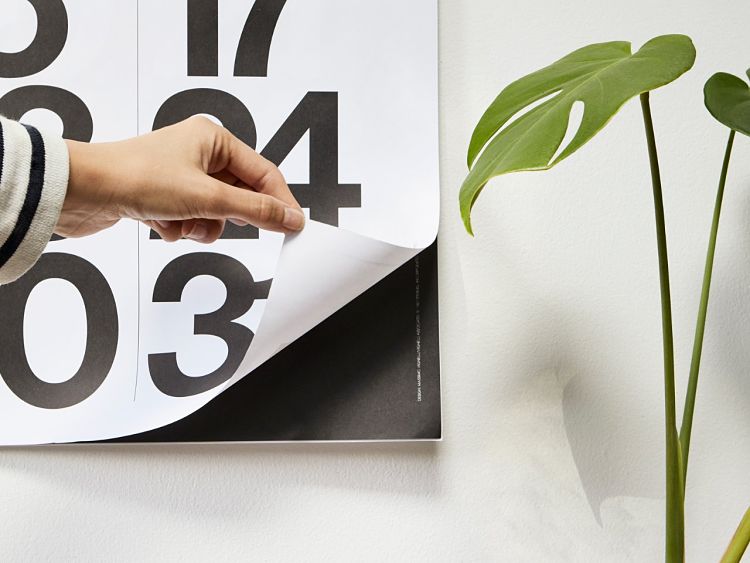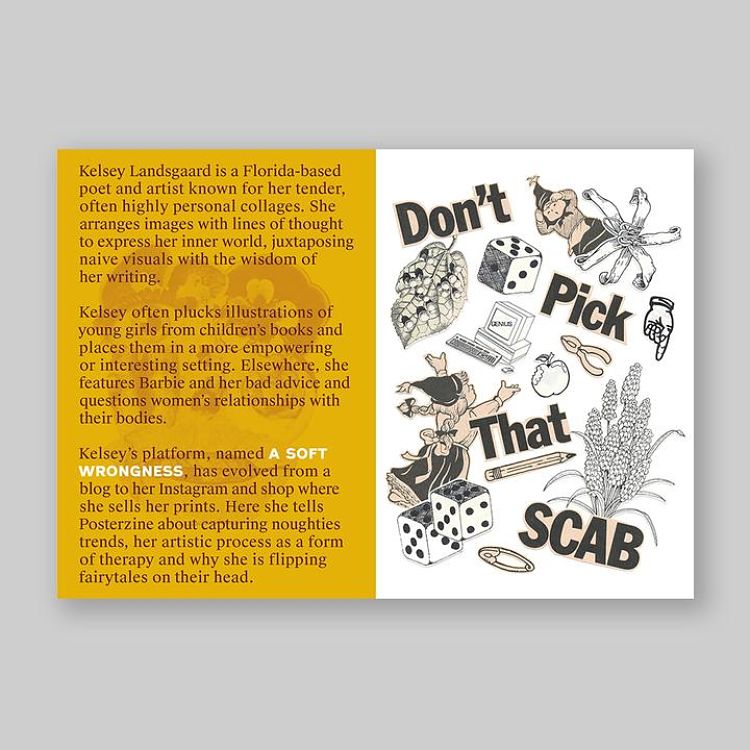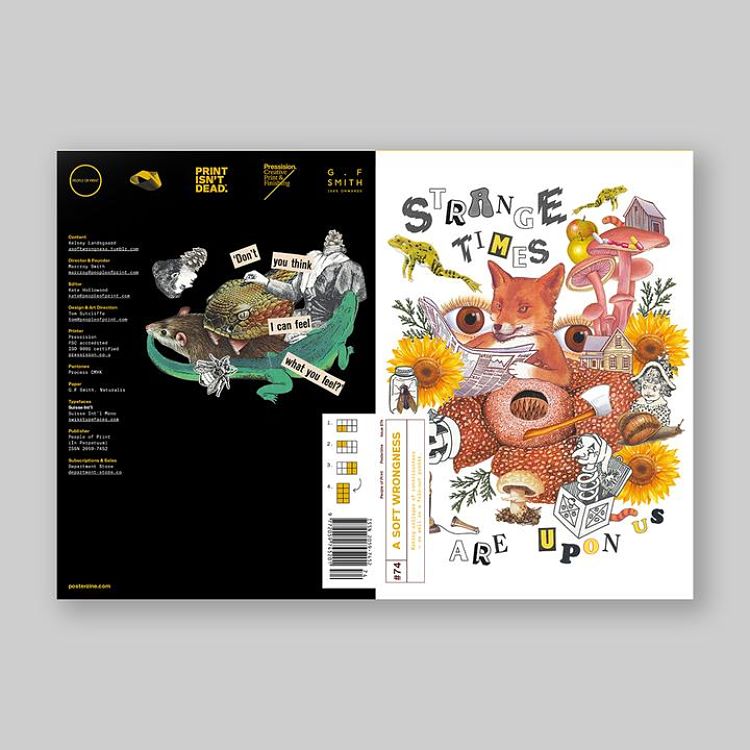|
https://ift.tt/3rsSTV8
‘Leaked’ Elon Musk Email Raises Specter of Raptor Production Issues, SpaceX Bankruptcy https://ift.tt/3d5ukp6 Is SpaceX going to Mars? Will the Raptor engines help launch the Starship super-heavy rocket any time soon? Will SpaceX go bankrupt? These and many more questions have been raised after an alleged email by SpaceX founder and CEO Elon Musk was leaked on November 29, 2021. Although there is still no confirmation whether the email excerpt is real or just a hoax, it has led to some serious concerns about the state of the multi-billion-dollar company. In an email supposedly sent out to employees last week, Musk directly links the failure to produce its Raptor engines to a possible bankruptcy. This is not the first time a crisis of this magnitude has hit close to home. At the South by South West (SXSW) conference in 2018, the entrepreneur told an audience that SpaceX and Tesla almost went bankrupt in 2008. And in 2002, Musk said he wouldn’t even let his own friends invest in his off-Earth venture, hoping to avoid losing their money. Initially obtained by media site Space Explored, the document says, “the Raptor production crisis is much worse than it had seemed a few weeks ago,” and that the consequences for SpaceX will be dire if the company cannot “get enough reliable Raptors made.” The alleged full text published in Space Explored reads as follows:
While other versions of the email were published in several social media accounts, including one by @TeslaTunnel, which is critical of all Musk-founded companies, the company has not confirmed or denied the document. Musk, however, took to Twitter to answer a few comments linked to the ‘email.’ When asked about the “Raptor situation” by one of the users, Musk said, “It’s getting fixed.” On a separate thread, he hinted that a bankruptcy “is not impossible,” citing other cases where companies (specifically GM and Chrysler) have gone bankrupt following a recession. The CEO also agreed with a tweet by American YouTuber Tim Dodd after he suggested that the “Raptor production problem” is due mainly to the huge investment in all things Starship, pointing to the engine’s production as “the biggest risk for bottleneck.” SpaceX’s next-generation Raptor engines had already begun flight testing on the Starship prototype rockets in July 2019. Aiming at a lifetime of 1,000 flights, Raptor is the highest thrust-to-weight engine ever made. Designed for carrying both crew and cargo to low Earth orbit (LEO), the Moon, and Mars, Raptor is considered the future of the company’s missions and is one of the first rocket engines to be powered by methane. The rocket engine includes quite a few 3D printed parts, enabling cost reductions and the production of the lightest components possible. A few of the printed parts include propellant valves, turbopumps, and many of the injectors’ critical pieces for initial engine development testing, which increases the speed of design and evaluation. As one of the original pioneers in the commercial space industry to leverage 3D printing for creating spaceship components, SpaceX has spearheaded many of the disruptive designs available today for spacecraft. The powerhouse began using 3D printing technology on spaceflight hardware in 2014 and even showed interest in buying 3D printing company VELO3D in 2021, one of its additive manufacturing suppliers. So far, SpaceX has ordered 22 machines from VELO3D, becoming the company’s largest customer to date. 
The first Raptor Vacuum engine (RVac) for Starship shipped from SpaceX’s rocket factory in California to SpaceX’s development facility in Texas. Image courtesy of SpaceX via Twitter. Musk explained in the past that the final Starship vehicle meant to soar into orbit will need six Raptors to carry up to 100 people. Since the operational Starship will launch from Earth atop a gigantic rocket called Super Heavy, powered by 31 Raptor engines, one of the main concerns is creating enough Raptor engines for its rockets. During a virtual meeting organized by the National Academy of Sciences earlier this month, the billionaire entrepreneur said that his company will attempt to launch the bullet-shaped Starship to orbit in January 2022, although he is not entirely optimistic about the first launch. It will probably take at least a dozen test flights next year to successfully reach orbit, he claimed. After that, the company is set to begin launching actual payloads to orbit by 2023. However, with news of Musk’s leaked email, this deadline might be at risk. The leak reveals severe problems in the Raptor engine production line, which, to many, come as no surprise since SpaceX was facing a few related issues in 2021, including the departure of two vice presidents (VPs). Both propulsion VP Will Heltsley and mission and launch operations VP Lee Rosen left just before Thanksgiving, having been with the company since 2009 and 2013, respectively. Such issues parallel those experienced by Tesla in the production of its Model 3, which has proven to exhibit numerous issues even after manufacture. As an emerging industry with sky-high revenue projections, magnificent promises of space travel for hundreds, and no claim for sovereignty in space, the sector is ripe for expansion–and disruption from 3D printing companies. This has been clear to Musk since the onset of his startup back in 2002. With a valuation surpassing $100 billion, SpaceX has become one of the most recognizable businesses in the world, especially following a series of successes in 2020, including having averaged one launch every two weeks and sending astronauts to the International Space Station (ISS) in what became the first orbital crewed mission to lift off from the United States since NASA grounded its space shuttle fleet in 2011. If confirmed, the leak shows several concerns that would arise if not enough Raptor engines are produced in time for the scheduled Starship launches. If that were the case, Musk also points at a potential failure to launch its Starlink satellites, notably the V2 series, which are “significantly more capable” than the V1 and were expected to begin orbiting in 2022. But the fight is not over yet. To avoid this uncertainty and guarantee high profits, Musk is pushing his team to work around the clock. Although the shadow of Raptor’s production lingers on, SpaceX had a few milestones these last few months, including the recent launch of the Double Asteroid Redirection Test (DART) Mission, the launch of the third crew of astronauts successfully docking on the ISS, and finally getting back to work with NASA on the Starship Moon lander. Printing via 3DPrint.com | The Voice of 3D Printing / Additive Manufacturing https://3dprint.com November 30, 2021 at 07:27PM
0 Comments
https://ift.tt/31hQ3qT
Digital Anatomy Creator Software Enables 3D Printing of Medical Models https://ift.tt/31f0XxC Over the past few years, Stratasys has transformed itself from a two technology hardware OEM with a strong service offering to a company that has a number of software products and a multi-technology offering. Come to Stratasys for your SLA, DLP, high-speed sintering, and, now, Digital Anatomy software. Stratasys’ Digital Anatomy is a solution for healthcare where PolyJet parts can be made to have the feel or anatomical structures. The idea is that medical students could practice on 3D printed organs that give them a realistic sense of suturing, injecting, or cutting. These organs could even be used for surgical planning or in classes or to educate patients. Stratasys mailed me a Digital Anatomy heart and I was thoroughly impressed by the textures and feel of it.
The new software attempts to solve one of the main problems of PolyJet. PolyJet is an exciting technology that can print a wide variety of colors, gradients and textures, but it is difficult to design for it using mesh, NURBS, or other traditional CAD tools. With such possibilities, it is also hard to know where you, as a designer, can start. Now, the company wants to let users create patient-specific anatomical models comparatively simply through its software. They can also do this now with FDA 510(k) cleared medical modeling workflows. 
Stratasys J750 Digital Anatomy can help standardize surgical skills and delivery of care by practicing on the most accurate representation of the targeted pathology. Image courtesy of Stratasys I really think that these models are an exciting tool in education and in explaining to patients what will happen to them, what a procedure will look like, or indeed what choices they have. Many patients are mystified by choices in surgeries and other procedures. These models could make the options much more real. The company also wants doctors to “replicate and share designs across a community for patient-specific anatomies.” I think that this would be a bit problematic in Europe, given privacy and patient data concerns, but it may be a good way for people on distant continents to study very specific cases. 
Medical 3D printing with Stratasys’ J750 Digital Anatomy printer. Image courtesy of Stratasys.
I think that this could be a handy tool in patient education and it could very easily become a trend with hip hospitals all offering it. The march of 3D printing into personalized care and the expansion of point-of-care 3D printing is advancing rapidly. Hundreds of hospitals already offer customized, patient-specific, and training models and from in-house 3D printing centers. In the U.S., hospitals can now be reimbursed for these models as well and they are being used to have a completely different dialogue with patients. Doctors have for years also used them to plan complex surgeries. In the long run, customized fixation solutions, braces, and implants, as well as custom surgical tooling, instruments, and hardware are all potential areas of expansion for 3D printing in hospitals. Bioprinting will begin to happen at one point, as well. At the same time, while digitisation is rampant in many areas of our lives, hospitals are often quaintly analog, working with hardcopies of images and CDs. Patient data exchange and the keeping and accessing of patient data are huge businesses. Until now, the doctors have had precious few solutions to manipulate and present data well. All in all, Stratasys is coming up with an interesting solution that may make PolyJet more usable in hospitals. Printing via 3DPrint.com | The Voice of 3D Printing / Additive Manufacturing https://3dprint.com November 30, 2021 at 09:03AM
https://ift.tt/3G29NOm
Bioprinting for Burns and Cancer on the Horizon for CTI Biotech https://ift.tt/3o6jWDG French startup CTI Biotech has hit two important milestones on the road to creating functional bioprinted human tissues. In November 2021, the company announced the development of an innovative... View the entire article via our website. Printing via 3DPrint.com | The Voice of 3D Printing / Additive Manufacturing https://3dprint.com November 30, 2021 at 08:33AM
https://ift.tt/3D7iOnI
Stendig Calendar https://ift.tt/3D1XnEs The legendary Stendig Calendar is back for 2022, and remains one of the best examples of 1960s modernist design, featuring two of the movement’s most iconic creations – Swiss typeface Helvetica and the Grid. The Stendig was originally designed by Massimo Vignelli in 1697 for Charles Stendig, a celebrated importer of mid-century European furniture to the US in the 1960s. Immediately after it was created, it was added by MoMA to its permanent collection, where it remains to this day. It’s been manufactured in Nashville, Tennessee for over 50 years.
Purchase the 2022 Stendig Calendar here. www.stendigcalendars.com Printing via People of Print https://ift.tt/2DhgcW7 November 30, 2021 at 08:18AM
https://ift.tt/3lna9Ht
Design for Disruption: 3D Printed Spares and MRO https://ift.tt/3d1vmSO (3DPrint.com PRO is available only to subscribers) If we want to make millions of parts or make millions from parts, we will have to disrupt existing production with additive manufacturing (AM). In order to do that, we have to overcome the traditional barriers to adoption of AM in part cost, throughput, repeatability, smoothness, material selection and more. But, what are some sound strategies to actually do this? We can wait until all the machines have a dozen lasers, but, until then, what can we do to move the needle towards broader and more successful adoption? One strategy is, by looking expressly at what 3D printing can actually do, we can focus on pursuing those business cases that make sense and actually matter. One of these is to perform retrofits and create an industrial aftermarket of parts. For that to occur, we first have to have services for maintenance, repair, and overhaul (MRO), as well as services for spare parts. The only really great examples of this right now are… Already a subscriber?You are set to receive premium content directly to your inbox twice a month. Printing via 3DPrint.com | The Voice of 3D Printing / Additive Manufacturing https://3dprint.com November 30, 2021 at 08:03AM Bioprinting Breakthrough: Bioprinter for Implantable Tissues Installed in French Hospital11/30/2021
https://ift.tt/3o6wQRY
Bioprinting Breakthrough: Bioprinter for Implantable Tissues Installed in French Hospital https://ift.tt/3D7EfVD A French hospital installed a bioprinter to manufacture biological tissues for transplantation in humans. This quantum leap in bioprinting is possible thanks to Poietis, a local biotech company specializing in the design of regenerative medicine therapies and proprietary 4D laser bioprinting technology. As the recipient of Poietis’ Next-Generation Bioprinting (NGB) robotic system, the Hôpital de la Conception, which is part of the Marseille Public University Hospital System (AP-HM), will start using the device as part of a clinical trial for grafting bioprinted skin tissue using patients’ own cells. Installed at the Hôpital de la Conception’s Advanced Therapy Medicinal Product (ATMP) manufacturing area, the device represents a real technological revolution for the healthcare sector. In fact, it is the result of a collaboration between Poietis and the AP-HM’s Cell Culture and Therapy Laboratory (LCTC) that began in early 2020 to overcome the challenges of currently available bioprinting processes. According to Poietis, the current manufacturing methods of biological tissues are not good enough to be adopted by the medical community, even though several extremely promising advances paved the way for new therapeutic strategies in tissue repair and substitution. Experts at AP-HM and Poietis consider that the “manufacturing processes need to be standardized,” and treatments should be more affordable. Up until now, various bioprinting technology platforms have been developed to meet these challenges. Still, none of them has proved compatible with the Good Manufacturing Practices regulations associated with manufacturing advanced therapy medicinal products (ATMPs). So, no bioprinted biological tissue has yet been implanted in a patient.
The NGB bioprinting platform, developed by Poietis and recently installed in the AP-HM hospital, meets these challenges thanks to numerous technological advances, including the integration of laser-assisted bioprinting and 3D extrusion biomaterial printing technologies in a completely aseptic environment. Moreover, the robotization of the platform and the automation of the processes allow the production of functional tissues with a high level of reproducibility and flexibility. As if that weren’t enough, the collaboration between Poietis and the French hospital resulted in a thousandfold increased printing speed, which lets users make 40 square centimeters (6.2 square inches) of skin substitutes in a few hours. As a reference, British experts have estimated the average surface area of the skin in adult women to be roughly 16,000 square centimeters (2,480 square inches) and 18,000 square centimeters (2,790 square inches) in adult men. Doctors will be able to bioprint a large quantity of skin at the hospital thanks to a simple sample taken very easily from the patient. This is a therapeutic innovation that AP-HM plastic surgeon, Maxime Abellan-Lopez, says he has been waiting for. It “offers us the capacity to reconstruct the skin of patients requiring a graft, such as after a burn or serious trauma, with minimal adverse effects.” The team at the hospital will bioprint a proprietary tissue model engineered by Poietis known as Poieskin. Described as a “human full-thickness skin model,” Poieskin consists of a dermal compartment composed of primary human fibroblasts embedded in a collagen I matrix overlaid by a stratified epidermis (the outermost layer of the skin) and derived from primary human keratinocytes–the primary type of cell found in the epidermis. As for the biofabrication process, it begins with dermis bioprinting and dermis maturation, followed by keratinocytes bioprinting, epidermal proliferation, and stratification at the air-liquid interface. A mature epidermis functions as a barrier that protects the body from dehydration or trauma. Recreating it using a bioprinting capability like Poietis could improve the repair of burn injuries. Typically, burn treatment, especially in the case of third- and fourth-degree burns, require specialized medical care involving the surgical removal of the injured skin and reconstruction of the burn injury using skin substitutes, like grafts. Ever since bioprinting has been suggested for treating burn wounds, the potential applications for the technology have been very promising. Admittedly, the clinical trial translation must meet the necessary technological and regulatory challenges before it becomes available to patients. However, Poietis and the AP-HM are moving fast. Thanks to the latest recommendations from the French Agency for the Safety of Health Products, the LCTC will finalize the validation of the Poieskin skin substitute manufacturing process before starting a clinical trial next year, which will be carried out with the support of the AP-HM’s Plastic and Reconstructive Surgery Department and the Interregional Center for severe burns. Although the medical center is focused on grafting human tissue using a bioprinter, the ultimate goal is to bioprint more complex tissues at the point of care, as close to the patient as possible. Like many medical doctors, the team at AP-HM dreams about equipping hospitals with bioprinters, where at-risk patients can have access to the artificial creation of human skin, tissue, and even someday, internal organs. Although this seems far away into the future, Poietis is readying the basis for what is to come.
For now, this installation is a significant milestone that will set off the commercialization of NGB-C bioprinters to cell therapy and translational research centers in France and eventually Europe and the US. It will also help Poietis accelerate the development of its portfolio of implantable bioprinted tissues for wound healing in the osteoarticular field and for treating neurodegenerative diseases. Printing via 3DPrint.com | The Voice of 3D Printing / Additive Manufacturing https://3dprint.com November 30, 2021 at 07:33AM
https://ift.tt/384QiXy
AddUp Partners with German Tooling Center for Metal 3D Printed Tools https://ift.tt/3o8X7iw WBA Aachener Werkzeugbau Akademie is a competence center for the production of tooling on the RWTH campus in Aachen. The centre is partnering with French laser powder bed fusion (LPBF) system manufacturer AddUp to install a FormUP 350 New Generation machine at its Demonstration Tool Shop. The center then hopes to train member companies and visitors to use the printer. The quad-laser AddUp system will be loaded with tool steel and is specifically meant to help tool makers make AM tools. The WBA will also be available to make medical tools and perform the post-processing.
Tool making has long been an application with a lot of promise in 3D printing. Mold tooling especially has been produced with our technology for some time. In many cases, we can manufacture tooling faster than traditional processes. In some cases, it can be cheaper as well, or it can allow firms to bid on contracts they would otherwise be unable to get. It could also lead to faster cycle times or optimized geometries that would lead to tools that could otherwise not be produced. Conformal cooling has long been a feature that could enable wider adoption of AM in the tooling market. Dies, inserts, molds and more represent a big potential market for AM and can really make these companies much more flexible and efficient. So, the focus by AddUp is a good one. Also, as a French company, targeting a German institute is a piquant choice, of course.
There’s another reason why the WBA is a good decision as well. Michelin—who started AddUp together with Fives—is probably one of the world’s most extensive users of AM tooling in production. The company has created an AM solution to make a great many tread molds and other key tooling components for its tire making process. Furthermore, it has done this at scale. So, in tooling, they have a deep expertise, as well as a very prestigious reference client and case. AddUp’s machines have been specifically made to produce a great many tooling components at an industrial firm and, so, the case, culture and machine design would tend to really appeal to similar people working in tooling. This is a great deployment that could see a lot of individuals get to know AddUp as a solution, as well as get to be trained up on the system. Previously, I’ve spoken very positively about AddUp’s 350 and its architecture. It is a production system that has been iteratively improved to perform production tasks well. I like that the powder handling and operation seem to be perfectly made to manufacture parts. The down-to-earth tooling market may just be the perfect place for AddUp to deploy itself to find more customers. Printing via 3DPrint.com | The Voice of 3D Printing / Additive Manufacturing https://3dprint.com November 30, 2021 at 07:03AM
https://ift.tt/3o3jciG
Posterzine Issue 74: A Soft Wrongness https://ift.tt/3FZEcNh Issue 74 of our monthly publication, Posterzine, introduces the work of Kelsey Landsgaard, AKA A Soft Wrongness. Kelsey is a Florida-based poet and artist known for her tender, often highly personal collages. She arranges images with lines of thought to express her inner world, juxtaposing naive visuals with the wisdom of her writing; often plucking illustrations of young girls from children’s books and placing them in a more empowering or interesting setting.
Posterzine is People of Print’s monthly publishing project taking the form of a mini-magazine which folds out into an A1 format poster (594x841mm). Printed by Pressision Ltd using CMYK onto quality G.F.Smith paper. Proudly sponsored by FRMD, who offer custom framing made easy with a select, modern choice of moulding and mount colours. For 10% off your framing quote frmdpop in your order enquiry.
Browse over 70 more issues on www.posterzine.com. Printing via People of Print https://ift.tt/2DhgcW7 November 30, 2021 at 06:17AM La Operación Santa de USPS ya está en marcha para la adopción de cartas https://ift.tt/3llEndU WASHINGTON, DC — USPSOperationSanta.com ya está en marcha y lista para ayudar a hacer que la temporada de fiestas 2021 sea especial para niños y familias en situación de necesidad. El programa ha ayudado a cientos de miles de personas durante más de un siglo. Printing via USPS News https://ift.tt/2hH9aDC November 29, 2021 at 10:12PM USPS Operation Santa now open for letter adoption https://ift.tt/3d0CwXw WASHINGTON, DC — USPSOperationSanta.com is live and ready to help make the 2021 holiday season special for kids and families in need. Printing via USPS News https://ift.tt/2hH9aDC November 29, 2021 at 09:10AM |
Categories
All
Archives
April 2023
|





 A true modernist, Vignelli is widely credited for bringing European Modernism to the United States. He was an advocate of functionality in design, favouring a minimalist aesthetic and basing his creations on real user needs. Throughout his career, Vignelli refused to adhere to any one design discipline. His work spanned different fields from branding to package design, furniture design, public signage and more.
A true modernist, Vignelli is widely credited for bringing European Modernism to the United States. He was an advocate of functionality in design, favouring a minimalist aesthetic and basing his creations on real user needs. Throughout his career, Vignelli refused to adhere to any one design discipline. His work spanned different fields from branding to package design, furniture design, public signage and more.
 The Stendig calendar is a supreme example of Vignelli’s emphasis on simplicity and simple geometric shapes. The entire craft of the design comes in the layout of simple helvetica lettering. Particularly noteworthy is the kerning on each combination of numerals, exactly judged and tailored to each pair so that the two numerals just kiss. Vignelli had a fairly strong view on fonts — he believed in only using a
The Stendig calendar is a supreme example of Vignelli’s emphasis on simplicity and simple geometric shapes. The entire craft of the design comes in the layout of simple helvetica lettering. Particularly noteworthy is the kerning on each combination of numerals, exactly judged and tailored to each pair so that the two numerals just kiss. Vignelli had a fairly strong view on fonts — he believed in only using a  Vignelli’s design is simple yet bold, litho-printed on large 122x92cm sheets bound together by three hand-punched eyelets. The pages alternate in colour, with odd months laid out as black text on white, and even as white text on black. Sheets are detachable, designed to be removed at the end of each month. The calendar is entirely recyclable, including the packaging, with customers encouraged to use used sheets as
Vignelli’s design is simple yet bold, litho-printed on large 122x92cm sheets bound together by three hand-punched eyelets. The pages alternate in colour, with odd months laid out as black text on white, and even as white text on black. Sheets are detachable, designed to be removed at the end of each month. The calendar is entirely recyclable, including the packaging, with customers encouraged to use used sheets as 
 The Stendig’s clean, minimalist aesthetic makes it suitable for any room in the house – whether the home office, the living room, the kitchen, the bedroom, or even the hall.
The Stendig’s clean, minimalist aesthetic makes it suitable for any room in the house – whether the home office, the living room, the kitchen, the bedroom, or even the hall.






 Purchase Issue 74
Purchase Issue 74  RSS Feed
RSS Feed
